If your home is short on space and has no room for a desk, this build helps make one appear when needed and store with ease when done. Learn how to make a Murphy Table in a day that will cost you less than 100 dollars!
Murphy items are designed to use space at its utmost efficiency while not being in the way. You can find Murphy beds that take up less room in small spaces, like studio apartments or guest bedrooms that need to be utility rooms. Well, this build shows you how to make a Murphy Table that is easy to assemble and will only take a day's worth of building and can cost up to 90 dollars or less depending on your materials.
This whole build does centralize around one piece, and it is crucial that it is measured and sized correctly. That piece is the frame and will serve as your only external support for your table. With that said, the height of the frame needs to be something comfortable for your uses. Whether it is standing or sitting, make sure you find a height that is comfortable and has practical applications.
Afterward, measure out your frame as this will determine your table's minimum length and width. Anything below those numbers will give your murphy table a skinny look that might not be aesthetically pleasing for most.
Some recommendations before building this table are whatever frame you choose to use, make sure that it has at least a 1-inch width around. Anything less has a high risk of screws puncturing when securing in the hinges.
Tools Needed:
For this build, the essential tools are the only ones needed. These are tools and that any homeowner or DIYer has or should get.
- Saw: Either Circular, Table, or Miter will do fine. A hand saw is an option, but will increase your work time.
- Drill and Drill Bits
- Screw Driver
- Measuring Tape
- Sander
Material Used:
- 1-pack of hinges
- 1-pack of heavy-duty hinges
- *Burlap Board
- **2 x (1×8-6') board
- **Wood glue
- **Clamps
*You can easily replace the burlap board for a picture frame, a chalkboard, or a framed poster. ** This can be replaced with a single sheet of plywood or any other wood you have on hand. If it is a single solid piece of wood, you can forget about the wood glue entirely.
After you have your material and the measurements from your frame, it's time to begin getting the right sizes from your wood. From this point on, I will be telling you how I did my build step by step.
Making the Cut(s)
So to begin, I measured and re-measured my frame to make sure I had the correct length and width to transfer onto my boards.
*If you are using a single piece of wood, you can skip a lot of these steps and continue on to sanding.
What I had for my particular build was a frame that was 23 inches in width and 35 inches in length. My two pieces of lumber measured out to 9 - ¼ inches in width and 72 inches in length. Cutting the boards to the proper length of the frame, I made four pieces from my two boards.
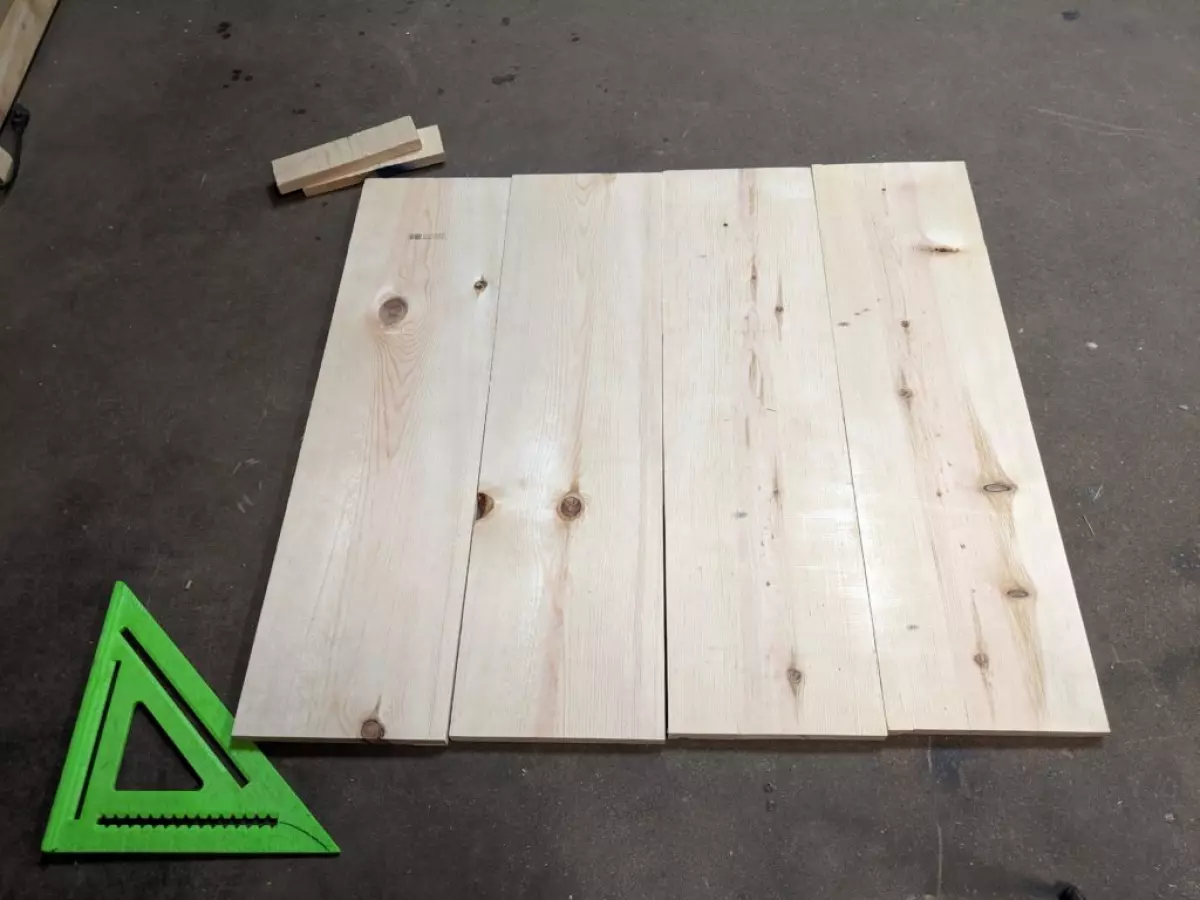 Fig. 1: Cutting the boards
Fig. 1: Cutting the boards
Next came the issue of making sure I had the right width for the table. From the four, I chose three that were level, neat, and were relative in the same length.
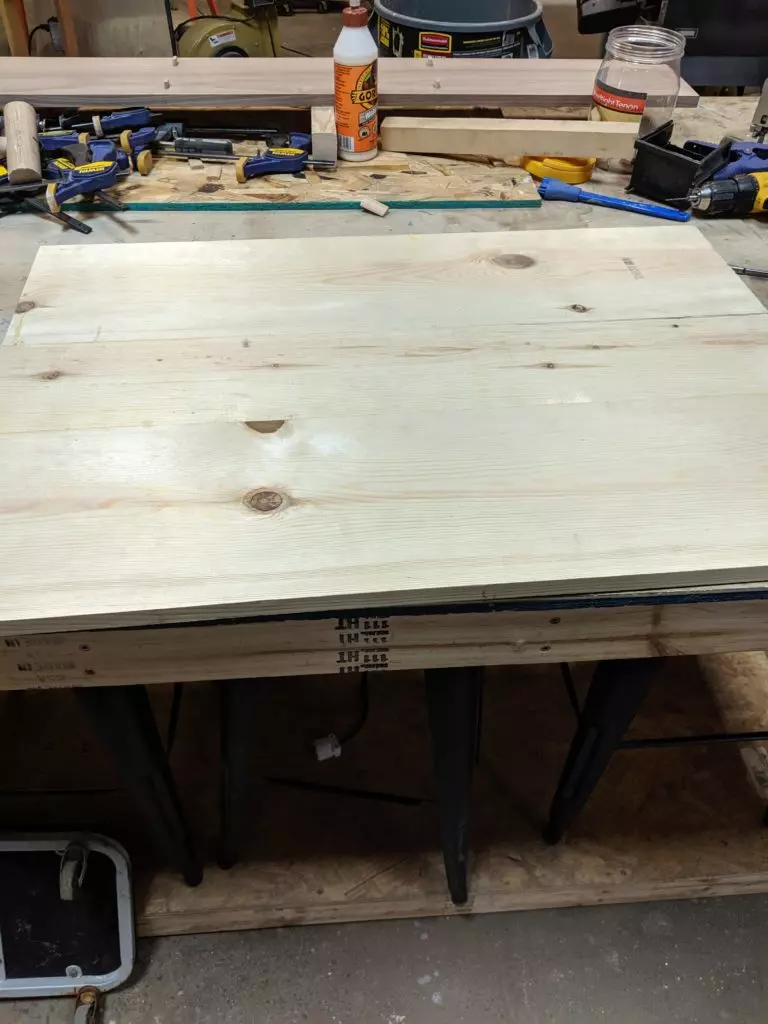 Fig. 2: Choosing the right boards
Fig. 2: Choosing the right boards
Calculations
Next, I had to figure out the measurement for the boards to make one singular piece for the table top. What I decided to do was to create a centerpiece that was shorter in width in the middle so the wider ends would be equal and make it symmetrical.
That meant I had to do a little bit of math to get the proper measurements for my boards to get them proportional to my frame as best I could.
 Fig. 3: Board measurements
Fig. 3: Board measurements
To make the math easy on my brain, I rounded up to 24 inches; this also gave me an inch of extra working room to account for errors. Subtracting the inches I needed from the ones I had available on the two boards, I came up with the length of my third board.
Once that was figured out, I cut my third board into its final shape and glued my pieces together.
 Fig. 4: Gluing the boards
Fig. 4: Gluing the boards
After drying, I cut the board to its final length.
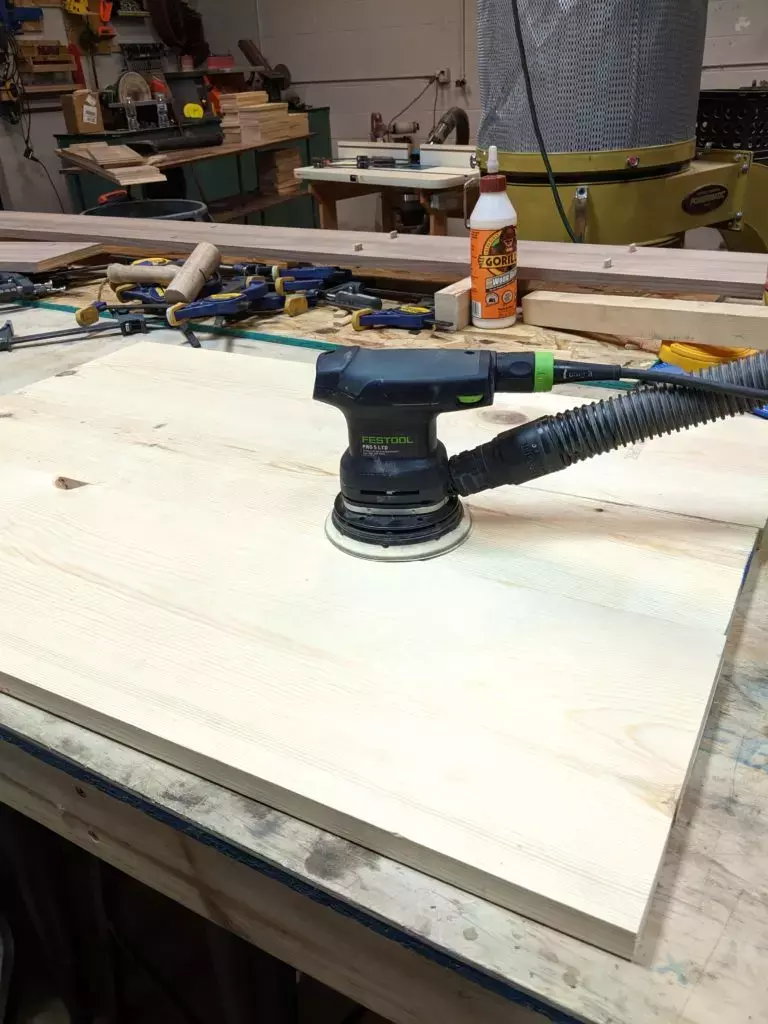 Fig. 5: Cutting the board
Fig. 5: Cutting the board
Time to Sand
Then came the sanding process, which thanks to a random orbital sander made it quick and far less time-consuming.
 Fig. 6: Sanding the wood
Fig. 6: Sanding the wood
Table Assemble!
Next is the assembly to see how the project looks altogether. If you are one of those people who like to look at the wood grain and as the bright color of this piece, you can stop here and call your Murphy Table complete. I, on the other hand, like simplistic and minimalism. Nothing says easy to blend then black to me.
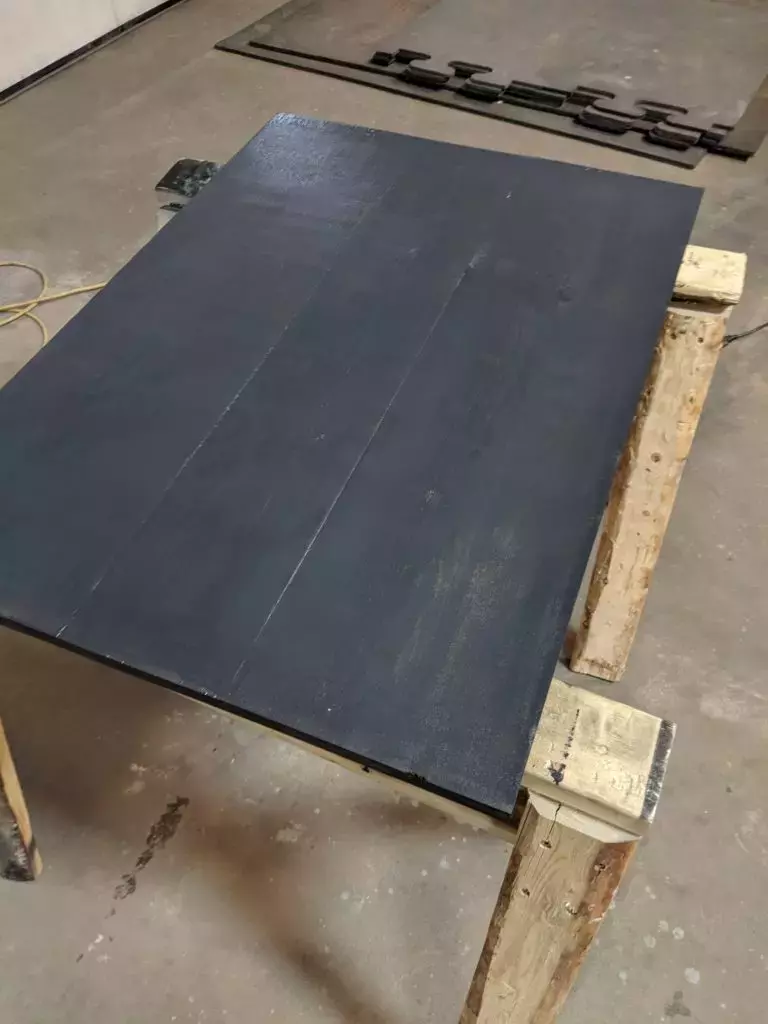 Fig. 7: Assembling the table
Fig. 7: Assembling the table
Final Product
 Fig. 8: Final product 1
Fig. 8: Final product 1
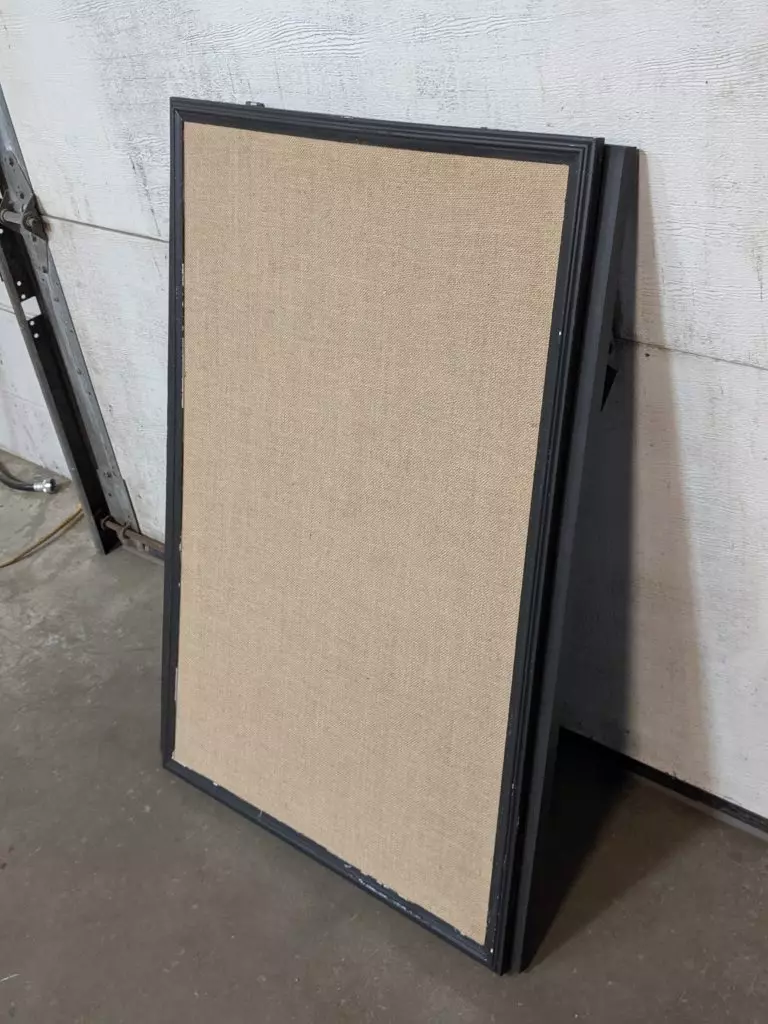 Fig. 9: Final product 2
Fig. 9: Final product 2
Moving onto the painting and taping the burlap board, this is to prevent paint getting on the surface. After applying two coats and touching up a few spots, I reassembled the desk and came up with this final product.
 Fig. 10: Final product 3
Fig. 10: Final product 3
The Murphy Table is a simple build that didn't take much time or require extensive knowledge about building. All it takes is confidence in handling the tools, a little planning, and willing to work with any mistakes that come your way.
For instance, the table came out an inch shorter than the frame and half an inch wider on each side. Does it ruin the piece at all? No. If anything, the mistakes made while making this build made it more memorable and a great learning experience.
Where was this Built?
Now for this build, I didn't own any of the tools used. I used a place in Grand Forks, ND called Makerspace. Makerspace is a unique place where it works on memberships and what they offer is a place for you to build or finish projects. Makerspace is exclusive to Grand Forks, but there are many other businesses similar to this one.
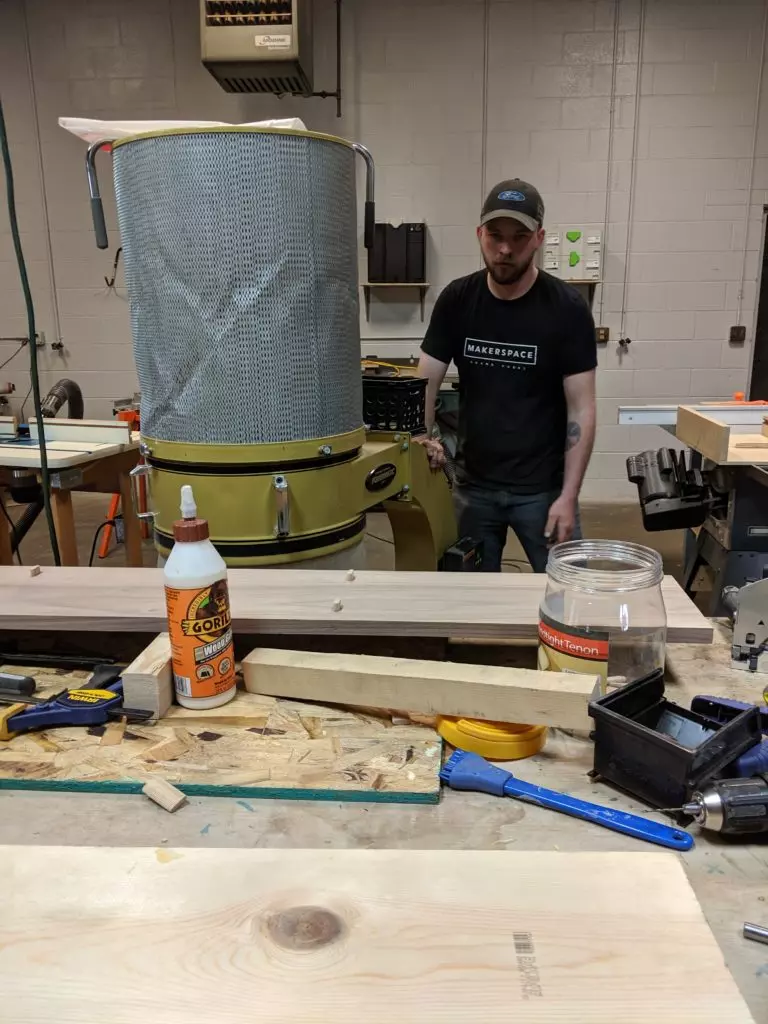 Fig. 11: Makerspace
Fig. 11: Makerspace
Creative spaces like this exist throughout the U.S. and offer an excellent way for beginners to use tools in a safe space with people who can help with your project. I had the great pleasure of having a few of the regulars there to help set up and use the tools, as well as lend a hand on the project.
Overall, this Murphy Table was a great DIY project to do and a simple solution that can save space in your home. The most remarkable thing about this, though, was that this project could easily be adapted to fit your personal needs and skill level. If you have some building know-how, you can make this piece stand out in your home. Add a shelf into your table to hide certain items until they're needed and require a workspace.
Did you enjoy this original Murphy Table build? Would you like to see more posts like this? Let us know in the comment section below what you think and what you would change about this project. If you want to see more builds or a buying guide to get the best tools, then check out the rest of Acme Tools Blog.
If you don't have a creative space like Makerspace available near you, you can order your tools at Acme Tools Online Store. You can find daily deals to get the best price on name brands. That way, you can get to work on any project because at Acme Tools, we always want you to Do Your Best Work.












